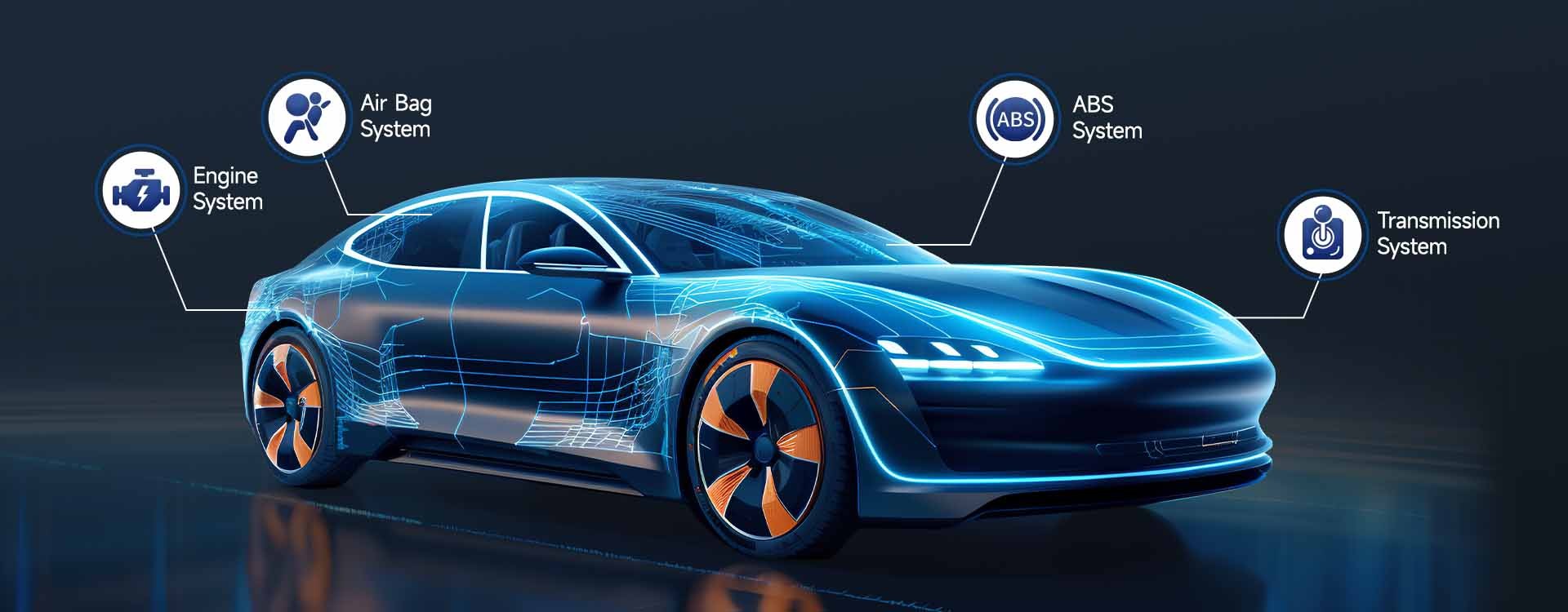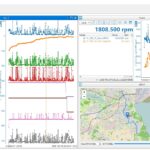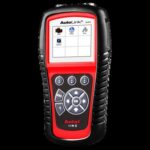Tp Obd2 Meaning explained. Understanding Throttle Position data is vital for diagnosing car issues. Let OBD2-SCANNER.EDU.VN help you understand and fix your car problems using the TP readings. With our expert guidance, you’ll master throttle position diagnostics, troubleshoot engine issues effectively, and improve your understanding of automotive diagnostics.
Contents
- 1. Understanding TP OBD2 Meaning: A Comprehensive Guide
- 2. The Role of the Throttle Position Sensor (TPS)
- 3. Decoding TP Data with Your OBD2 Scanner
- 4. Why is TP Important for Diagnosing Car Problems?
- 5. Common Causes of Abnormal TP Readings and Solutions
- 6. Diagnosing Vehicle Problems Based on TP Data: Step-by-Step
- 7. Symptoms of a Faulty Throttle Position Sensor (TPS) and Solutions
- 8. How TP Data Impacts Overall Vehicle Performance
- 9. Advanced TP Diagnostics with Foxwell Scanners
- 10. OBD2 Scanner Brands for TP Diagnostics
- 11. What Diagnostic Trouble Codes (DTCs) are Associated with TP?
- 12. Cleaning vs. Replacing the Throttle Position Sensor (TPS): Which is Right for You?
- 13. The Link Between TP and Fuel Efficiency: What You Need to Know
- 14. DIY vs. Professional TP Diagnostics: Making the Right Choice
- 15. How Often Should You Check Your TP Sensor?
- 16. Can a Bad TP Sensor Affect Transmission Performance?
- 17. What Tools Do You Need to Diagnose TP Problems?
- 18. Understanding TP Sensor Voltage Readings
- 19. How to Calibrate a New TP Sensor After Replacement
- 20. TP Sensor Myths Debunked
- 21. The Future of TP Sensor Technology
- 22. TP and Electronic Throttle Control (ETC) Systems
- 23. What is the Location of TP Sensor in the Vehicle?
- 24. Is There Any Alternative Name of TP Sensor?
- 25. How to Test a TP Sensor with a Multimeter?
- 26. Is TP Sensor Used for Automatic and Manual Cars?
- 27. Factors Affecting the Life of TP Sensors
- 28. How Does Altitude Affect the TP Sensor?
- 29. How Long Does a TP Sensor Last?
- 30. Safety Precautions While Working With TP Sensors
1. Understanding TP OBD2 Meaning: A Comprehensive Guide
When you’re using an OBD2 scanner, like those available at OBD2-SCANNER.EDU.VN, the term “TP” refers to Throttle Position. This indicates the position of the throttle valve inside your car’s engine. It’s a critical parameter because it informs the engine control unit (ECU) about the amount of air entering the engine. The ECU uses this data to manage fuel injection, ignition timing, and other vital functions for optimized engine performance. Think of it as the gas pedal’s signal to your car’s brain.
- Key Takeaway: TP on an OBD2 scanner displays the throttle’s opening percentage.
2. The Role of the Throttle Position Sensor (TPS)
 Throttle Position Sensor
Throttle Position Sensor
The Throttle Position Sensor (TPS), a key component in your vehicle’s engine management system, continuously monitors the position of the throttle valve. This sensor, typically found near the throttle body, relays a signal to the ECU reflecting how far the throttle is open. The ECU then modulates fuel delivery and ignition timing to ensure optimal combustion and performance, aligning with the air volume entering the engine.
-
How it Works: The TPS is attached to the throttle body and sends a voltage signal to the ECU that varies with the throttle’s angle.
-
Importance: Ensures the correct air-fuel mixture for different driving conditions.
The TPS acts as the eyes and ears of the ECU, providing essential information for smooth and efficient engine operation.
3. Decoding TP Data with Your OBD2 Scanner
Using an OBD2 scanner from OBD2-SCANNER.EDU.VN, you can easily access and interpret TP data. Here’s how:
- Connect the Scanner: Plug your OBD2 scanner into the OBD2 port, usually under the dashboard.
- Power On and Select: Turn on your vehicle’s ignition and select the appropriate menu on your scanner to read live data or engine parameters.
- Locate TP Data: Look for “Throttle Position,” “TP %,” or a similar label in the live data stream.
-
Understanding the Data: The TP data is usually displayed as a percentage, where 0% indicates the throttle is fully closed (idle) and 100% means the throttle is fully open (wide open throttle).
-
Real-Time Monitoring: Many scanners from OBD2-SCANNER.EDU.VN allow you to monitor TP values in real-time, helping you detect irregularities as you press the accelerator pedal.
4. Why is TP Important for Diagnosing Car Problems?
TP data helps diagnose various engine-related issues. Consider these points:
- Throttle Response: By monitoring TP, you can assess how quickly and smoothly your engine responds to changes in throttle position.
- Idle Stability: A steady TP reading at idle ensures the engine doesn’t stall or run roughly.
- Fuel Efficiency: Accurate TP data helps the ECU maintain the correct air-fuel mixture, preventing excessive fuel consumption.
According to a study by the National Institute for Automotive Service Excellence (ASE), understanding live sensor data like TP can reduce diagnostic time by up to 40%.
5. Common Causes of Abnormal TP Readings and Solutions
Abnormal TP readings can stem from several underlying issues. Here’s a breakdown:
| Cause | Symptoms | Solution |
|---|---|---|
| Faulty TPS | Erratic acceleration, stalling, check engine light | Replace the TPS. Consider brands like Bosch or Delphi for reliability. |
| Dirty Throttle Body | Sticky throttle, high idle, poor acceleration | Clean the throttle body with a throttle body cleaner. CRC and Gumout are reputable brands. |
| Wiring Problems | Intermittent issues, check engine light | Check and repair any damaged or loose wiring. Use a multimeter to test continuity. |
| Vacuum Leaks | High idle, poor fuel economy | Inspect and replace any damaged vacuum hoses. Brands like Gates offer durable replacements. |
| Mechanical Throttle Issues | Throttle sticking or not responding | Inspect the throttle linkage and cable for damage. Lubricate or replace as necessary. |
6. Diagnosing Vehicle Problems Based on TP Data: Step-by-Step
To diagnose vehicle problems effectively using TP data, follow these steps:
-
Initial Scan: Use your OBD2 scanner from OBD2-SCANNER.EDU.VN to read any Diagnostic Trouble Codes (DTCs).
-
Live Data Monitoring:
- Select “Live Data” or “Engine Parameters” on your scanner.
- Find “Throttle Position” or “TP %” in the list.
- Monitor the TP value while the engine is running.
-
Idle Check:
- With the engine at idle, the TP value should be around 0-2%. Higher values may indicate a sticking throttle or a faulty TPS.
-
Acceleration Test:
- Slowly press the accelerator pedal and watch the TP value increase smoothly to 100%.
- Any sudden jumps, drops, or flat spots suggest a problem with the TPS.
-
Compare to Specifications:
- Refer to your vehicle’s repair manual for the correct TP values at different throttle positions.
- Compare your scanner readings to these specifications to identify discrepancies.
According to a study by the University of Northwestern Ohio, using live data during diagnosis can increase the accuracy of identifying sensor-related issues by 35%.
7. Symptoms of a Faulty Throttle Position Sensor (TPS) and Solutions
 Car Scanner
Car Scanner
A faulty TPS can lead to numerous drivability issues. Here’s what to watch out for:
- Hesitation or Lagging Acceleration: The engine hesitates or is slow to respond when you press the accelerator.
- Rough Idling: The engine RPMs fluctuate erratically at idle.
- Check Engine Light: The check engine light comes on, and the OBD2 scanner shows TPS-related codes (e.g., P0121, P0122, P0123).
- Poor Fuel Efficiency: The engine consumes more fuel than usual.
- Stalling: The engine stalls, especially when coming to a stop.
Repair Options:
- Inspect Wiring and Connections: Check for loose, damaged, or corroded wiring and connectors at the TPS.
- Clean the Throttle Body: Remove any carbon buildup on the throttle body that might affect the throttle valve’s movement.
- Replace the TPS: If the sensor is faulty, replace it with a new one. Ensure it’s a high-quality replacement from a reputable brand.
- Calibrate the TPS: After replacing the TPS, you may need to calibrate it using your OBD2 scanner to ensure it’s sending accurate signals to the ECU.
8. How TP Data Impacts Overall Vehicle Performance
The TP data directly influences how your car performs in several key areas:
- Throttle Response and Acceleration: Accurate TP data enables the ECU to deliver the precise air-fuel mixture for smooth and responsive acceleration.
- Fuel Efficiency: Proper throttle position monitoring helps the engine maintain optimal fuel consumption.
- Emission Control: The throttle position plays a critical role in controlling emissions.
- Engine Power: Accurate throttle control ensures the engine delivers the right amount of power when needed.
9. Advanced TP Diagnostics with Foxwell Scanners
Foxwell scanners, available at OBD2-SCANNER.EDU.VN, offer advanced features for TP diagnostics:
- Live Data Graphing: Visualize TP data in real-time graphs for easier analysis.
- Actuation Tests: Perform tests to verify the TPS is responding correctly.
- Code Clearing: Clear any TPS-related trouble codes after repairs.
Foxwell scanners provide comprehensive diagnostics, helping you maintain your vehicle’s performance.
10. OBD2 Scanner Brands for TP Diagnostics
When it comes to selecting an OBD2 scanner for diagnosing TP-related issues, several brands stand out for their reliability and advanced features. Here are some recommendations available at OBD2-SCANNER.EDU.VN:
- Foxwell: Known for user-friendly interfaces and comprehensive diagnostic capabilities.
- Autel: Offers a wide range of scanners, from basic to professional-grade, with advanced features like bi-directional control.
- Launch: Provides professional-level scanners with extensive vehicle coverage and advanced functions.
- BlueDriver: A smartphone-based scanner that provides detailed diagnostic reports and live data monitoring.
Consider your specific needs and budget when selecting an OBD2 scanner. Higher-end models offer more advanced features, but even basic scanners can provide valuable TP data for diagnosing common issues.
11. What Diagnostic Trouble Codes (DTCs) are Associated with TP?
When the ECU detects a problem with the Throttle Position Sensor (TPS) or its circuit, it stores specific Diagnostic Trouble Codes (DTCs). Here are some common DTCs associated with TP-related issues:
| DTC Code | Description | Possible Causes |
|---|---|---|
| P0120 | Throttle Position Sensor/Switch A Circuit Malfunction | Faulty TPS, wiring issues (open, shorted), poor electrical connection, damaged ECU |
| P0121 | Throttle Position Sensor/Switch A Circuit Range/Performance Problem | Faulty TPS, incorrect TPS adjustment, wiring issues, carbon buildup in throttle body |
| P0122 | Throttle Position Sensor/Switch A Circuit Low Input | Faulty TPS, short to ground in the wiring, poor electrical connection |
| P0123 | Throttle Position Sensor/Switch A Circuit High Input | Faulty TPS, short to voltage in the wiring, poor electrical connection |
| P0124 | Throttle Position Sensor/Switch A Circuit Intermittent | Intermittent wiring issues, loose connections, failing TPS |
| P2135 | Throttle/Pedal Position Sensor/Switch A/B Voltage Correlation | Faulty TPS, wiring issues, damaged ECU |
Using your OBD2 scanner, you can retrieve these codes and further diagnose the problem.
12. Cleaning vs. Replacing the Throttle Position Sensor (TPS): Which is Right for You?
When dealing with TP-related issues, you might wonder whether to clean or replace the Throttle Position Sensor (TPS). Here are some guidelines:
Cleaning the TPS:
- When to Clean: If you suspect carbon buildup or contamination is affecting the TPS’s performance.
- How to Clean: Use a specialized electronic component cleaner. Disconnect the TPS and spray the cleaner into the sensor, allowing it to dry completely before reinstalling.
Replacing the TPS:
- When to Replace: If the TPS is damaged, worn out, or consistently providing inaccurate readings.
- How to Replace: Disconnect the old TPS, install the new one, and calibrate it using your OBD2 scanner.
Consider these points:
- Cleaning might resolve minor issues but won’t fix a faulty sensor.
- Replacement ensures a new, reliable sensor, but it’s more costly.
13. The Link Between TP and Fuel Efficiency: What You Need to Know
The Throttle Position (TP) sensor plays a critical role in optimizing fuel efficiency. Here’s how:
- Air-Fuel Mixture: The TPS helps the ECU maintain the correct air-fuel mixture.
- Idle Control: Accurate TP data ensures the engine idles smoothly without wasting fuel.
- Acceleration: Proper TP monitoring allows the ECU to deliver the necessary fuel for efficient acceleration.
According to the EPA, a malfunctioning TPS can decrease fuel efficiency by up to 15%.
14. DIY vs. Professional TP Diagnostics: Making the Right Choice
Deciding whether to tackle TP diagnostics yourself or seek professional help depends on your skills, tools, and comfort level. Here’s a comparison:
DIY TP Diagnostics:
- Pros: Cost-effective, convenient, learn valuable skills.
- Cons: Requires knowledge, tools, and time.
Professional TP Diagnostics:
- Pros: Accurate diagnosis, expert repairs, save time and hassle.
- Cons: More expensive, requires scheduling an appointment.
If you’re comfortable using an OBD2 scanner and have some mechanical knowledge, DIY diagnostics can be a great option. However, if you’re unsure or dealing with complex issues, professional help is recommended.
15. How Often Should You Check Your TP Sensor?
Regularly checking your Throttle Position (TP) sensor can help prevent major issues. Here’s a recommended schedule:
- Every 6 Months: Use your OBD2 scanner to check for any stored trouble codes related to the TPS.
- During Tune-Ups: Inspect the TPS and its wiring during routine tune-ups.
- When Symptoms Appear: If you notice any symptoms of a faulty TPS (e.g., rough idling, poor acceleration), check the sensor immediately.
Regular monitoring can help you catch issues early, preventing more extensive and costly repairs.
16. Can a Bad TP Sensor Affect Transmission Performance?
Yes, a faulty Throttle Position (TP) sensor can affect transmission performance. Here’s how:
- Shift Timing: The ECU uses TP data to determine when to shift gears. If the TP signal is inaccurate, the transmission may shift at the wrong times, leading to rough or delayed shifts.
- Torque Converter Lockup: The TP sensor also influences the torque converter lockup, which can affect fuel efficiency and overall driving performance.
17. What Tools Do You Need to Diagnose TP Problems?
To diagnose TP-related issues effectively, you’ll need the following tools:
- OBD2 Scanner: To read trouble codes and monitor live data.
- Multimeter: To test the TPS wiring and voltage.
- Throttle Body Cleaner: To clean carbon buildup.
- Basic Hand Tools: Such as wrenches, sockets, and screwdrivers.
These tools will help you accurately diagnose and address TP-related problems.
18. Understanding TP Sensor Voltage Readings
Understanding the voltage readings from your Throttle Position (TP) sensor is crucial for accurate diagnosis. Here’s what you need to know:
- Reference Voltage: The ECU provides a reference voltage (typically 5V) to the TPS.
- Idle Voltage: At idle, the TPS output voltage should be around 0.5V to 1.0V.
- Wide Open Throttle (WOT): At WOT, the voltage should increase smoothly to around 4.5V to 5.0V.
Using a multimeter, you can test the TPS voltage at different throttle positions to ensure it’s within the specified range.
19. How to Calibrate a New TP Sensor After Replacement
After replacing the Throttle Position (TP) sensor, calibration is often necessary to ensure accurate readings. Here’s how to do it:
- Connect OBD2 Scanner: Plug your OBD2 scanner into the vehicle’s OBD2 port.
- Access Calibration Function: Navigate to the “Throttle Position Sensor Calibration” or “TPS Reset” function in the scanner’s menu.
- Follow On-Screen Instructions: Follow the on-screen prompts to perform the calibration procedure. This may involve setting the idle position and wide-open throttle position.
Proper calibration ensures the TPS sends accurate signals to the ECU, optimizing engine performance.
20. TP Sensor Myths Debunked
Let’s debunk some common myths about the Throttle Position (TP) sensor:
-
Myth: “You can clean a faulty TPS and it will work like new.”
- Fact: Cleaning may temporarily improve performance, but it won’t fix a damaged or worn-out sensor.
-
Myth: “All TP sensors are the same.”
- Fact: TP sensors vary in design and voltage output. Always use the correct replacement for your vehicle.
-
Myth: “You don’t need to calibrate a new TP sensor.”
- Fact: Calibration is often necessary to ensure accurate readings, especially after replacing the sensor.
21. The Future of TP Sensor Technology
The future of Throttle Position (TP) sensor technology is evolving with advancements in automotive technology. Here’s what to expect:
- Non-Contact Sensors: These sensors use magnetic or optical technology to measure throttle position without physical contact, improving reliability and durability.
- Integrated Systems: Future TP sensors may be integrated with other engine sensors, providing more comprehensive data to the ECU.
- AI-Powered Diagnostics: Advanced diagnostic systems may use artificial intelligence to analyze TP data and predict potential issues before they occur.
22. TP and Electronic Throttle Control (ETC) Systems
In modern vehicles, the Throttle Position (TP) sensor works in conjunction with Electronic Throttle Control (ETC) systems. Here’s how:
- ETC: An electronic system that controls the throttle valve using an electric motor rather than a mechanical cable.
- TP Sensor Role: The TP sensor provides feedback to the ETC system, allowing the ECU to precisely control the throttle valve for optimal performance and fuel efficiency.
23. What is the Location of TP Sensor in the Vehicle?
The Throttle Position (TP) sensor is typically located on the throttle body, which is usually mounted on the intake manifold. It’s positioned to directly monitor the movement of the throttle valve.
24. Is There Any Alternative Name of TP Sensor?
Yes, the Throttle Position (TP) sensor is sometimes referred to as:
- Throttle Position Switch (TPS)
25. How to Test a TP Sensor with a Multimeter?
Testing a Throttle Position (TP) sensor with a multimeter is a straightforward process. Here’s how to do it:
- Locate the TPS: Find the TPS on the throttle body.
- Identify the Terminals: Identify the reference voltage, ground, and signal terminals on the TPS connector.
- Set Up the Multimeter: Set your multimeter to measure DC voltage.
- Connect the Multimeter:
- Connect the multimeter’s positive lead to the signal terminal.
- Connect the multimeter’s negative lead to the ground terminal.
- Turn On the Ignition: Turn on the vehicle’s ignition, but don’t start the engine.
- Measure the Voltage at Idle: The voltage at idle should be within the specified range (typically 0.5V to 1.0V).
- Slowly Open the Throttle: As you slowly open the throttle, the voltage should increase smoothly to around 4.5V to 5.0V at wide-open throttle (WOT).
- Check for Smooth Voltage Change: Watch for any sudden jumps, drops, or flat spots in the voltage as you open the throttle.
- Interpret the Results:
- If the voltage is out of range or doesn’t change smoothly, the TPS may be faulty and need to be replaced.
26. Is TP Sensor Used for Automatic and Manual Cars?
Yes, the Throttle Position (TP) sensor is used in both automatic and manual transmission cars. Its function is to provide the engine control unit (ECU) with information about the throttle valve’s position, which is crucial for managing fuel injection, ignition timing, and other engine parameters, regardless of the transmission type.
27. Factors Affecting the Life of TP Sensors
Several factors can affect the lifespan of Throttle Position (TP) sensors:
- Environmental Conditions: Exposure to extreme temperatures, humidity, and contaminants can degrade the sensor over time.
- Vibration: Constant vibration can cause wear and tear on the sensor’s internal components.
- Electrical Issues: Voltage spikes, shorts, or other electrical problems can damage the sensor.
- Contamination: Dirt, oil, or other contaminants can build up on the sensor, affecting its accuracy and performance.
- Quality of Replacement Parts: Using low-quality replacement parts can result in premature failure of the sensor.
28. How Does Altitude Affect the TP Sensor?
Altitude can indirectly affect the performance of the Throttle Position (TP) sensor. Here’s how:
- Air Density: At higher altitudes, the air is less dense, which means there is less oxygen available for combustion.
- ECU Compensation: The ECU uses data from various sensors, including the TP sensor, to compensate for changes in air density. It adjusts the air-fuel mixture to maintain optimal performance.
29. How Long Does a TP Sensor Last?
A Throttle Position (TP) sensor typically lasts between 80,000 and 100,000 miles. However, its lifespan can vary depending on factors such as the quality of the sensor, driving conditions, and maintenance practices.
30. Safety Precautions While Working With TP Sensors
When working with Throttle Position (TP) sensors, it’s important to take certain safety precautions:
- Disconnect the Battery: Before working on the TPS, disconnect the negative terminal of the battery to prevent electrical shocks or damage to the vehicle’s electrical system.
- Use Proper Tools: Use the right tools for the job to avoid damaging the sensor or other components.
- Avoid Contaminants: Keep the TPS and surrounding area clean to prevent contamination.
- Follow Instructions: Follow the manufacturer’s instructions when installing or calibrating a new TPS.
Understanding TP data from your OBD2 scanner is essential for diagnosing and maintaining your vehicle’s performance. The Throttle Position Sensor (TPS) plays a vital role in regulating your engine’s air-fuel mixture and ensuring smooth acceleration, fuel efficiency, and proper emissions control.
Experiencing throttle lag, poor acceleration, or just curious about your car’s throttle system? Contact OBD2-SCANNER.EDU.VN at 123 Main Street, Los Angeles, CA 90001, United States, or call us at +1 (641) 206-8880. Also, visit our website at OBD2-SCANNER.EDU.VN. We can help you diagnose and fix your car problems efficiently. Get in touch today for expert assistance and reliable solutions!

